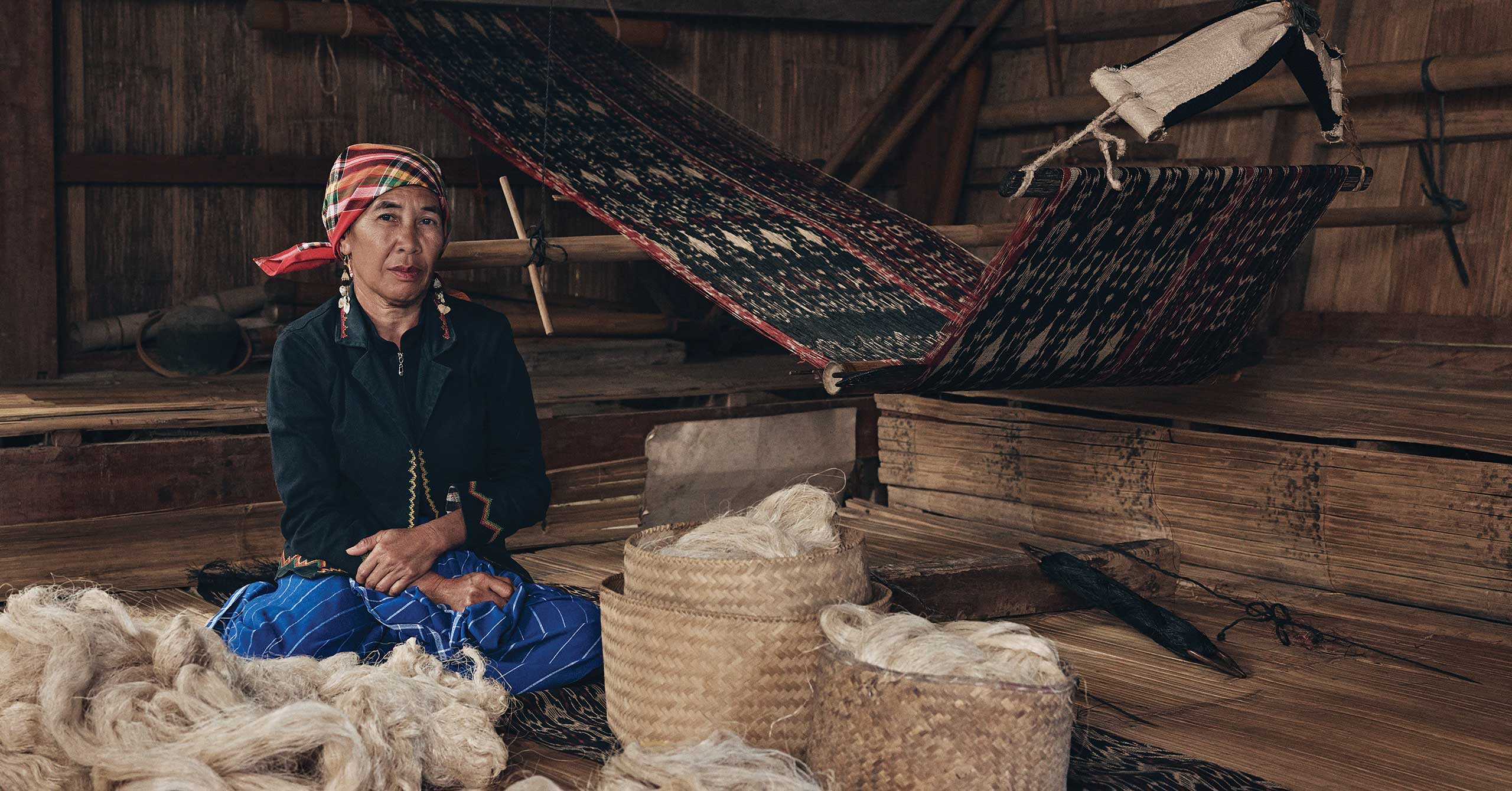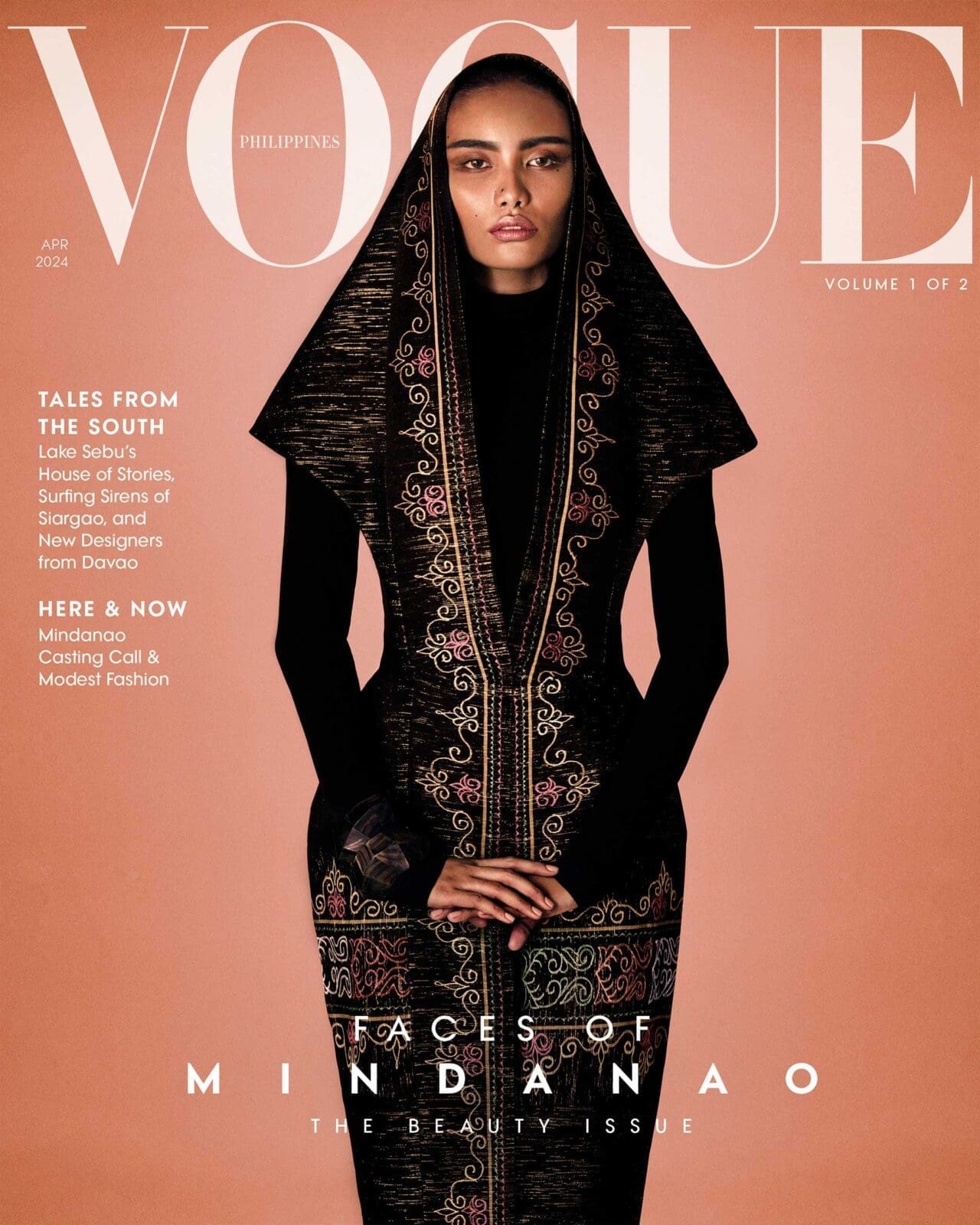Yab Man in her weaving center. She has been nominated for the Gawad sa Manlilikha ng Bayan. Photographed by GABRIEL NIVERA for the April 2024 Issue of Vogue Philippines
Glory Girl Sangid Lon and Gerlyn Joy Timbang are students at the Tboli Sbu Senior High School. Photographed by GABRIEL NIVERA for the April 2024 Issue of Vogue Philippines
In the mountains of South Cotabato, the Tboli strive to keep their stories alive, one thread at a time.
There must be 50 ways to eat tilapia. Any restaurant in Lake Sebu will list a plethora of options for serving the fish that is farmed in abundance in the lakes of Lake Sebu: chicharon, kinilaw, sinanglay, nilasing, nilagpang, paksiw, curry, and the weirdly blue-tinged tilapia ice cream.
The tilapia, despite it being identified with the attractions of Lake Sebu, is not endemic to the area. Introduced in the 1970s, the Nile tilapia kickstarted the fish culturation industry in the area, which now accounts for over 50 percent of municipal income. The majority of fish pen operators in Lake Sebu are non-Tboli. Last year, a phenomenon known as fish kill struck Lake Sebu, laying waste to more than 200 tons of fish. Some Tboli believe the “kmahong” is a curse for over-crowding and polluting the sacred lake, which was once so clear you could see all the way to the bottom.
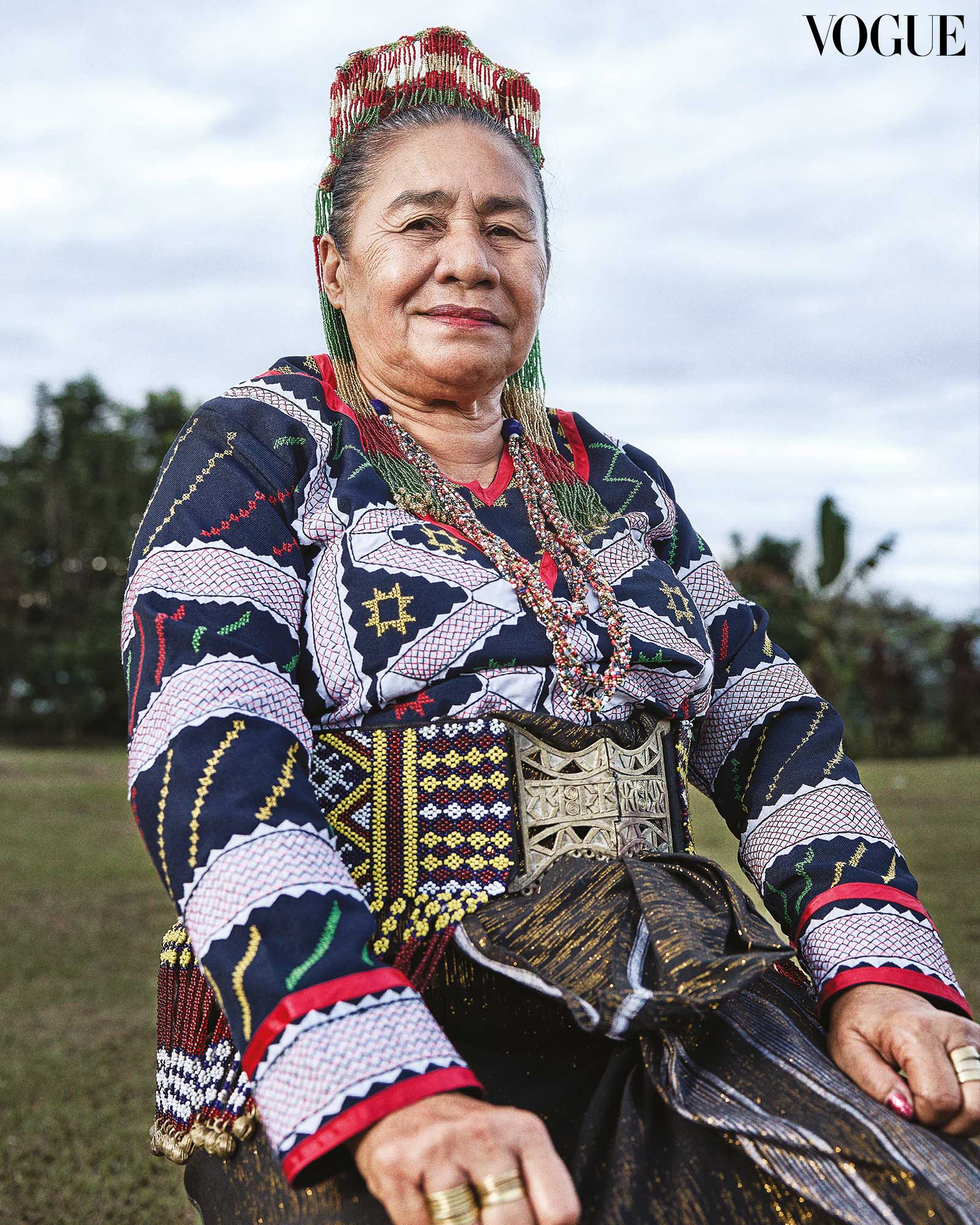
For centuries, the Tboli people living in the Allah Valley in Cotabato were spared from Spanish colonization. In the early 1900s, when the Americans opened the valley to Christian settlers from other parts of the country, the Tboli moved up the slopes of the mountains. Waves of industrial migrants, from ranchers to loggers and miners, continued to displace them from their homelands. One Tboli group congregated around three mountain lakes: Lake Lahit, Lake Seloton, and Lake Sebu, the largest of the three and which their municipality is named after.
In 1961, American Passionist missionaries arrived at the then-remote and isolated Lake Sebu, establishing the Santa Cruz Mission and its schools. The mission intended to provide a Catholic education for the IP children, one that integrates rather than erases their culture and identity.
Fr. Gabriel Casal in his book Tboli Art (1978) acknowledged the progressive nature of this form of proselytizing but was concerned about the new set of problems it would create, like if this would form a Tboli that was neither truly Christian nor purely animist. Fr. Rex Mansmann, the legendary if controversial priest who ran the mission for nearly three decades, once explained their philosophy in a 1989 interview this way: “Our belief is that religion is one of the strongest ways of undermining a culture. We don’t consider their religion superstitious. We consider it something sacred, something beautiful and something our Christianity has added to but not replaced.” The Lake Sebu Tboli I met today seemed to have merged these beliefs without any issue—they still hold space for the rocks and trees and rivers to be imbued with an animate force, while recognizing that the force is derived from God.
“Gónô Tmutul will be a space for transferring indigenous knowledge to the young“
In 1978, a young Englishwoman named Lynne Bilson (now Billie Riley) worked as a volunteer parateacher with the Santa Cruz Mission in Lake Sebu. For two years she lived with the Tboli and learned their language and customs and even earned the honorific name Boi Fak (which translates to Lady Frog). Before she left, they gifted her with their tools and their arts, including a hunting spear, intricately embroidered blouses, colorful beaded jewelry, and the most revered offering, the ye kumu or “mother blanket” of the cloth now known as tnalak, a highly valued weft-ikat dyed fabric used throughout a Tboli’s life from birth to death.

We don’t know what Riley did with those things in the intervening years, or what she thought about that part of her history, seemingly a lifetime ago and worlds away. But as she neared her 70th birthday, she did think about them and was possibly inspired by the ongoing global discussions around the future of art and artifacts widely dispersed and distant from their source cultures. An article in the New York Times in December 2022 noted that the “the surge in museum repatriations is a just response to more than a century of treasure-hunting that they say took advantage of societies made vulnerable by poverty, war, or political instability.”
Of course, Riley legitimately owned the materials. They were given to her with the graciousness and generosity of a people who appreciated her service as a volunteer. But she felt her time as the objects’ steward was drawing to an end, and she didn’t want to risk them ending up in the hands of someone who didn’t know their worth. She tried approaching museums, but realized they would just end up in storage, unseen. Serendipitously, a friend told her to check out SOAS, the School of Oriental and African Studies at the University of London.
At SOAS, Riley discovered the Mapping Philippine Material Culture project led by Dr. Cristina Juan with the support of Marian Pastor Roces. MPMC is a digital database of Philippine objects held in museums and private collections outside of the Philippines, “not only absent from view but often undervalued, under-researched, and without any type of human connection,” as stated on the website. In addition to online documentation, Dr. Juan and Roces planned field trips to the source communities to share photos of the objects. To date, these “digital re-patriation” events have already taken place among the Blaan of Sarangani, the Bagobo of Davao del Sur, the Talaandig of Bukidnon, and the Tboli of Lake Sebu.

Riley jumped on this incredible chance to revisit Lake Sebu and return the objects to the community members herself. In April 2023, she joined Dr. Juan, Jovi Juan, and Roces on a flight to General Santos City and a two-hour car ride up to the mountains. The group arranged a small ceremonial turnover of the collection where Riley tearfully reunited with old friends and shared the story behind each of the items brought home. There was a lot of emotion in the room as the younger Tboli had never seen some of the objects, while the older Tboli recognized the handiwork of their elders who have since passed.
One story hit hard—Riley was walking in the mountains where she encountered an old man, a Datu. He was holding a spear, which he kept trying to give to her. She told him, no, no, I can’t take it, it’s yours. Then he said, “Look at the mountains. There are no trees, there are no monkeys. There’s nothing to hunt anymore.”
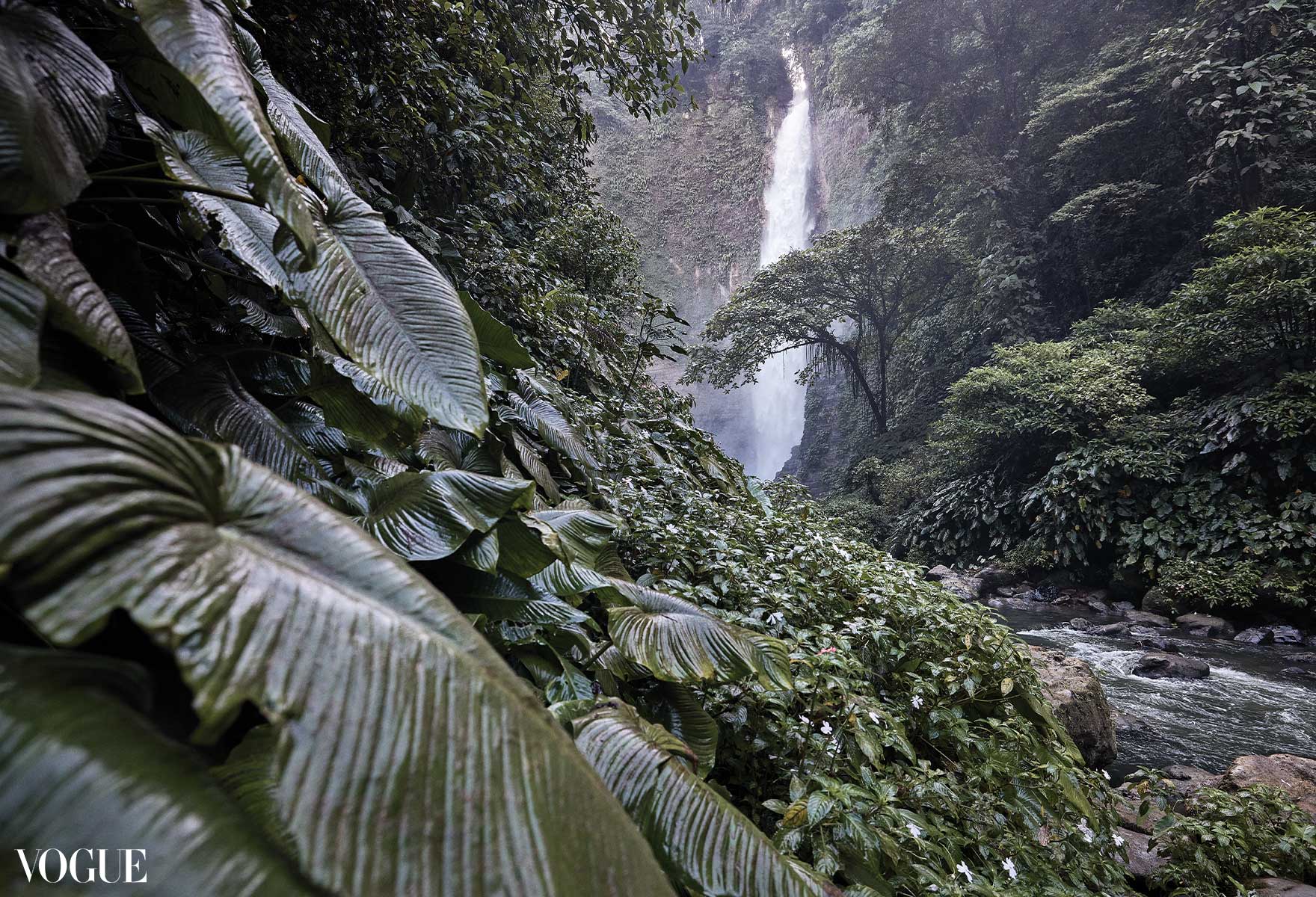
The collection was handed over to the care of Benjie Manuel, the head teacher at Tboli Sbu SHS, the first senior high school in the Philippines to offer an indigenous culture-based program. The plan is to construct a community center called Gónô Tmutul, House of Stories, which would house the repatriated material, display the photographs from the MPCM project, and other collections, and serve as a learning space for the children of the community. The center is set to open its doors in July.
“Gónô Tmutul will be a space for transferring indigenous knowledge to the young. For example, Ma’am Myrna Pula, who is a legendary storyteller,” says Benjie Manuel, who will be the core caretaker of the house. “This will give space for her so that her stories can be heard by the community.” The repatriation was documented by the Juans in the film Gónô Tmutul: Building a House of Stories, which was screened in several countries with the aim of offering a possible framework for returning material to their origins and threading back these ancestral stories into their lives.


For independent curator and critic Marian Pastor Roces, it is utterly important that current and future generations of Tboli see and understand that their forebears were artists of exceptional skill. Because many of the mid-20th century tnalak have ended up in museums or private collections outside the Philippines, the continuous transfer of skills and knowledge from Tboli grandmother to mother to daughter has met with tremendous odds. Many Tboli women are still wonderful dyers, but some patterns have been lost to memory, and mastery has diminished. Also a textile scholar, Roces makes a side-by-side comparison of the ye kumu returned by Riley with a contemporary one—to the trained eye, the old tnalak exhibits a higher level of intricacy and fineness in the details, while the new ones have less defined shapes and a sharp color saturation indicative of artificial dyes.
Could this be the reason or a sign that Fu Dalu, the spirit of abaca, does not visit the weavers in their dreams anymore? South Cotabato tourism has adopted the tagline “Land of the Dreamweavers” as a tribute to the tnalak women weavers of the province. But not all weavers dream. In a 2017 interview with anthropology student Vinci Bueza, the weaver Ye Nida, whose patterns were learned from a sister-in-law and not through divine download, said that no one dreams of patterns anymore, and that maybe they have all been already revealed.


In the 2001 book Dreamweavers—believed to be the first popular use of the term—Corazon Alvina writes, “For some time, the Tboli and the spirits were estranged because the weavers were not doing things properly. For instance, they placed the abaca in plastic receptacles instead of local plaited baskets, they fabricated one-colored textiles because they were easier to weave and convert to cash; tnalak became too commercialized. Realizing their lapse, the Tboli weavers have reverted to their wont; the spirits are visiting again.”
The book documents some of the last dreamweavers of Lake Sebu and their tnalak: included in the portfolio are Lang Dulay, the first Tboli to be named a National Living Treasure in 1999, Barbara Ofong, who would win the same award in 2023, and Yab Man, who would be granted her own weaving center through a partnership with textile designer John Robshaw and Len Cabili of Filip+Inna. Today there are over 30 weaving centers in Lake Sebu, as well as women-run cooperatives that sell handcrafted souvenirs and tnalak accessories that, while not strictly traditional, help the Tboli women earn a living.
“These mystical dimensions of Tboli ikat-dyeing does not equate to the English term ‘dreamweaver’ “
Before it was given monetary value, tnalak was a valuable trade item, explains Craig Diamond, an independent researcher and collector of Tboli and Blaan textiles. “Tnalak was a form of currency used to acquire food, gongs, horses and other important items,” he says in a lecture for the Ethnic Arts Council. “Thus weaving was and remains a vital and admired skill for a Tboli woman and her family.”
Roces offers a different description of value: that which is embedded in the complex reciprocation and exchange systems of Austronesian speakers. “The cloth was not the equivalent of the English word dowry. And a bride’s worth has an equivalent groom’s worth,” she says. This changed when selling the tnalak in the external market empowered the women economically and allowed them to take ownership over their work.
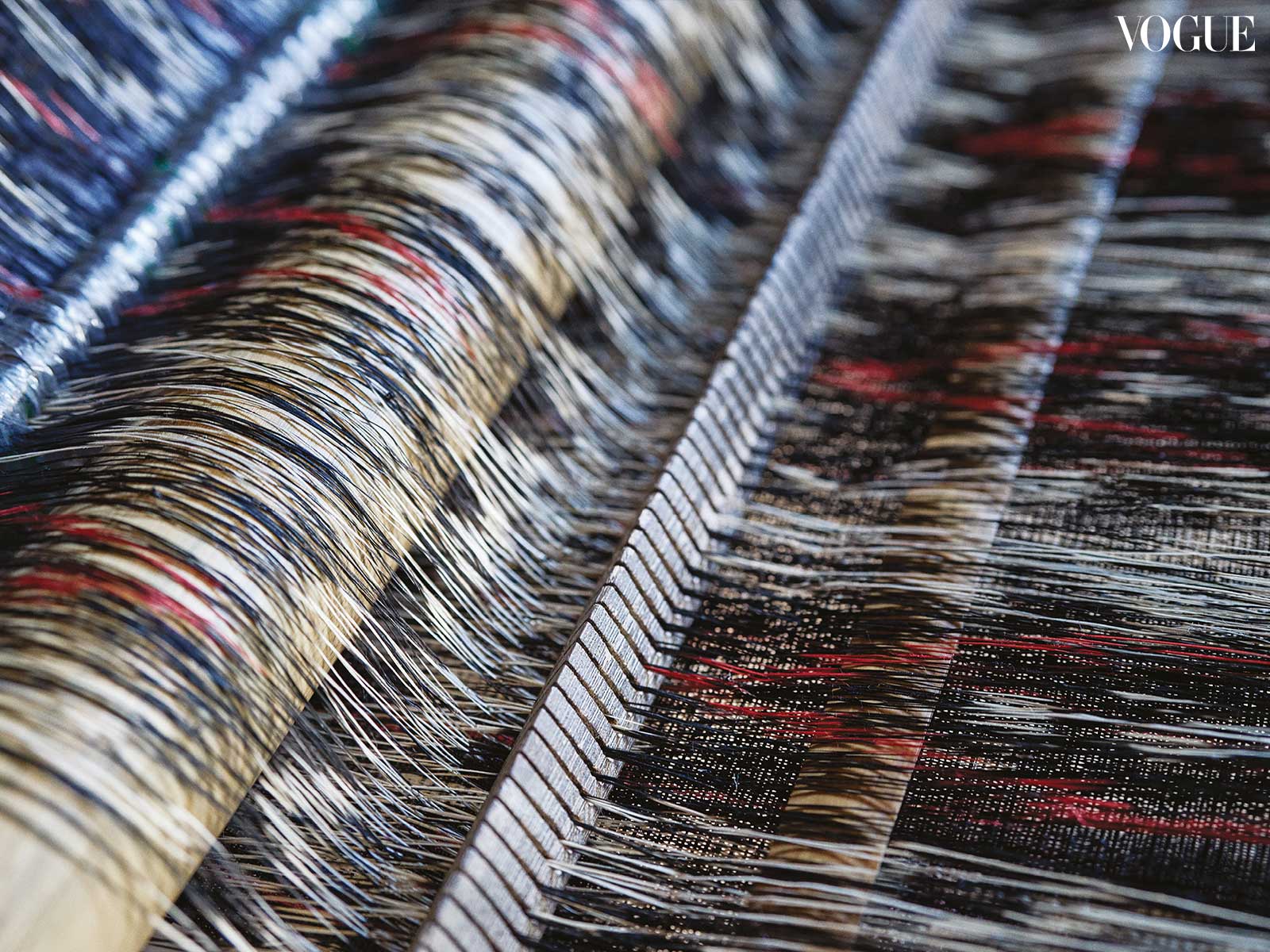
We visited Yab Man’s weaving center in January. A work-in-progress ye kumu was stretched out from a beam along the wall, the backstrap on the other end suspended from the ceiling. There are many rules where tnalak making is concerned. The abaca threads must not touch the ground; nobody is allowed to walk across the loom. For some specific patterns, the weaver is required to be abstinent during the entire process. If a mistake is made, Fu Dalu will strike the offender with illness. Yab Man had just turned down a market order for tnalak made with cotton. It would have brought in more income, but displease the spirit of abaca.
If this seems doubtful, Neal Oshima, who photographed Dreamweavers, shares in the book’s foreword an incident that might make you change your mind. Oshima had brought nearly 100 tnalak pieces to his studio in Manila to be photographed. His assistant, a Tboli teenager, came with him from Mindanao to burnish the cloth (rub the fibers with the back of a cowrie shell to give it a glossy sheen). The boy suddenly developed a high fever that persisted for days, and he insisted on going to the studio. Enveloping himself in the curtain of hanging textiles, he chanted and played the jaw harp. When he emerged from the ritual, he told Oshima that in his dream, “the spirit of the abaca had scolded him for burnishing the tnalak so far away from Mindanao.” To show their respect and to appease Fu Dalu, they took a single thread from each panel which they sent back to Lake Sebu.
It takes a village to produce tnalak, and there the roles for men and women are well understood. Men harvest and prep the abaca (Musa textilis Neé, known as Manila hemp when industrially manufactured as rope or paper), while the women string the fibers together to be arranged on the loom, with the more delicate threads used for the warp (lengthwise) and thicker ones for the weft (crosswise). The most integral and challenging part is translating the pattern in the weaver’s head into thousands of tiny knots tied around each abaca warp strand according to the desired color of black, red, and white. There is no sketching on paper or outlining the design on the warp. There is only the weaver inside the apparatus, using her back to modulate the tension of the threads while she plots an abstract, possibly ancient pattern of wax-coated knots on the blank abaca slate with mathematical precision. Assistants and apprentices, usually female family members, are there to help out, and if so blessed, so is the guiding hand of Fu Dalu.
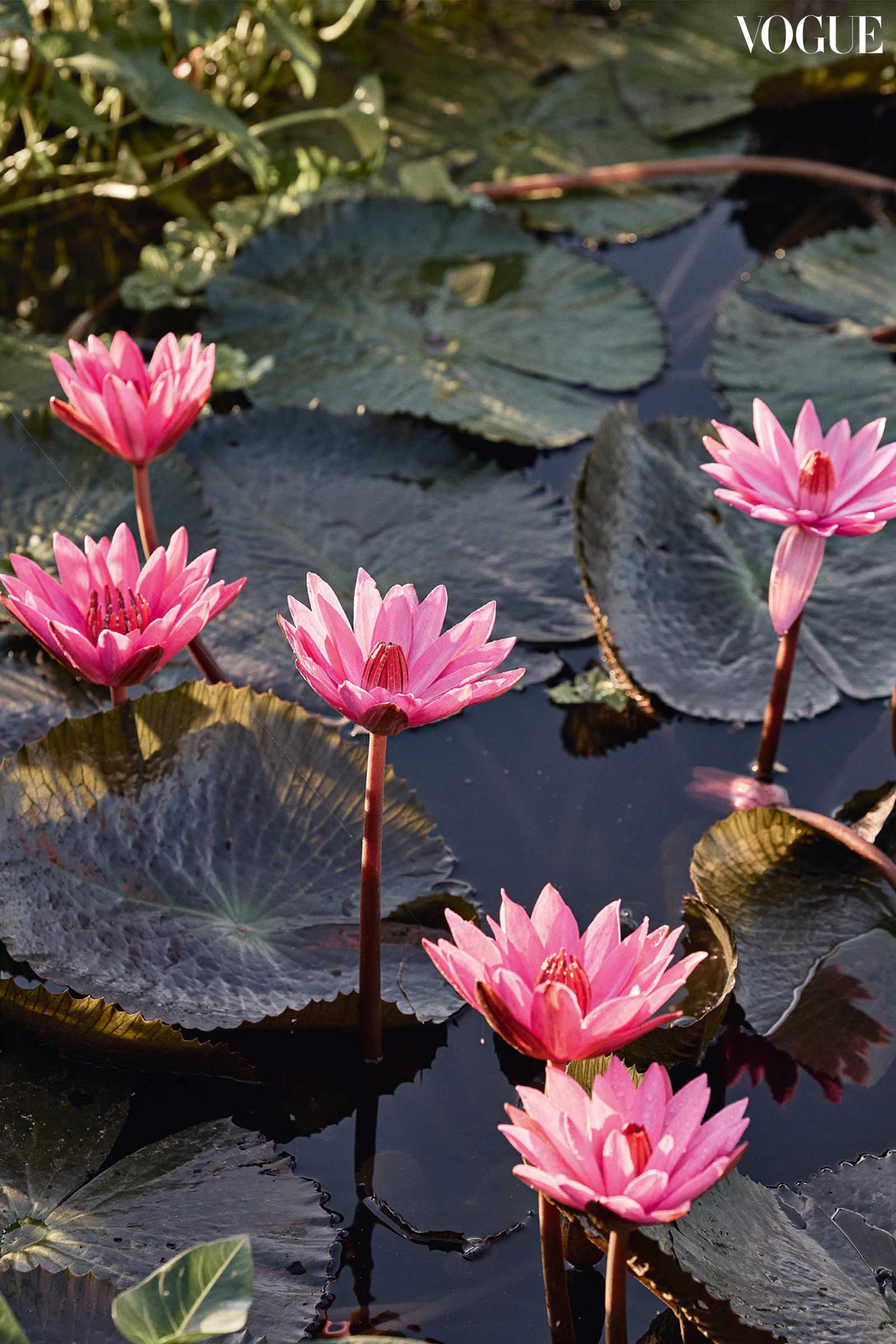
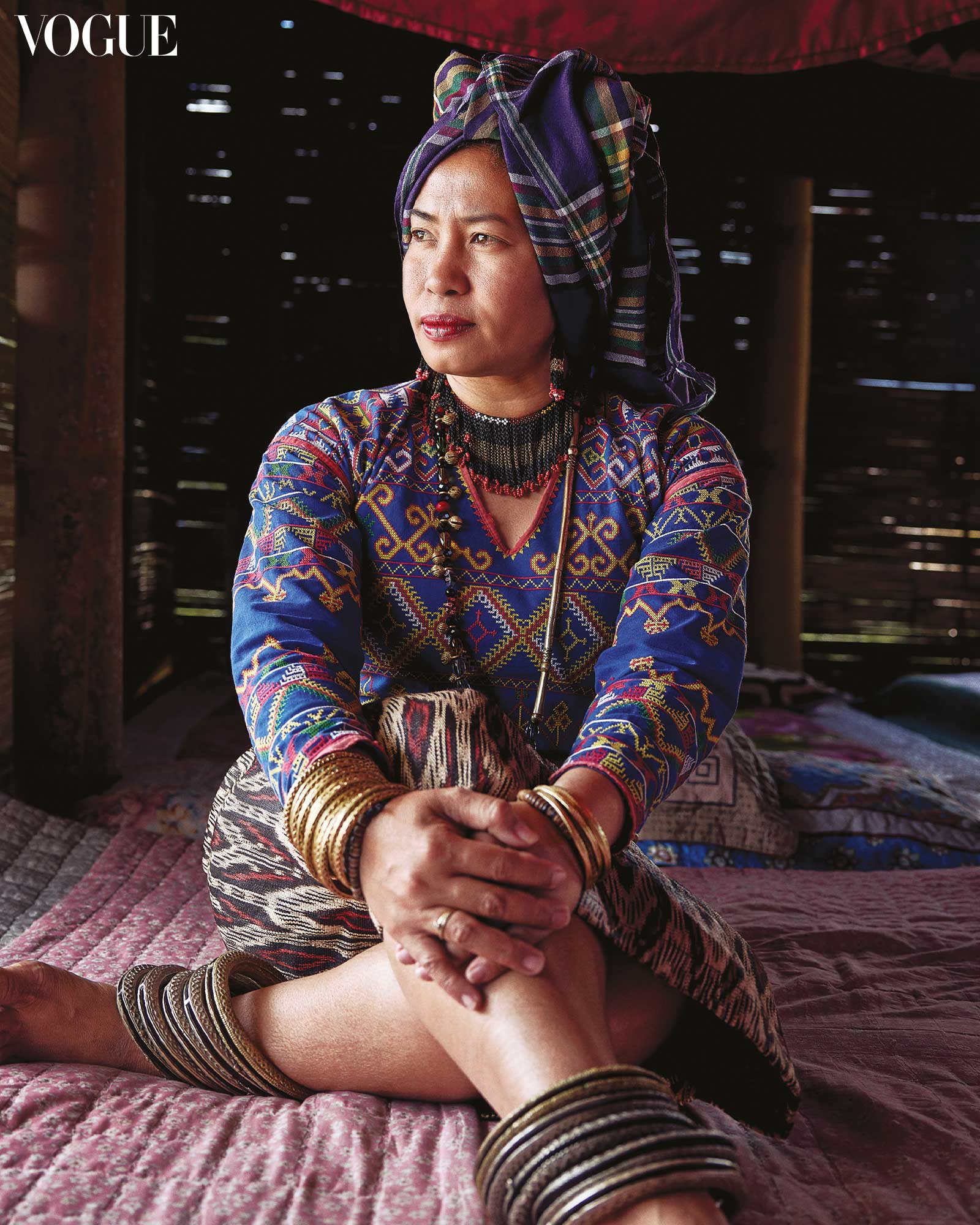
The resist-dyeing process will take days of boiling, using knalum leaves for black and loko roots for red. The last remaining knots that are untied will reveal the natural ecru of the abaca. As Roces says, tnalak is an art of tie-dying more than it is of weaving. “Ikat represents an infinitude of tedium that is difficult to imagine except in terms of some kind of trance situation,” she writes in her book Sinaunang Habi: Philippine Ancestral Weave (1991). “At its most profound level, weaving must have been a commitment to the mysterious resonances of the small scale. The concentration and stamina can only be explained in mystical terms.” These mystical dimensions of Tboli ikat-dyeing, Roces says, does not however equate to the English term “dreamweaver.”
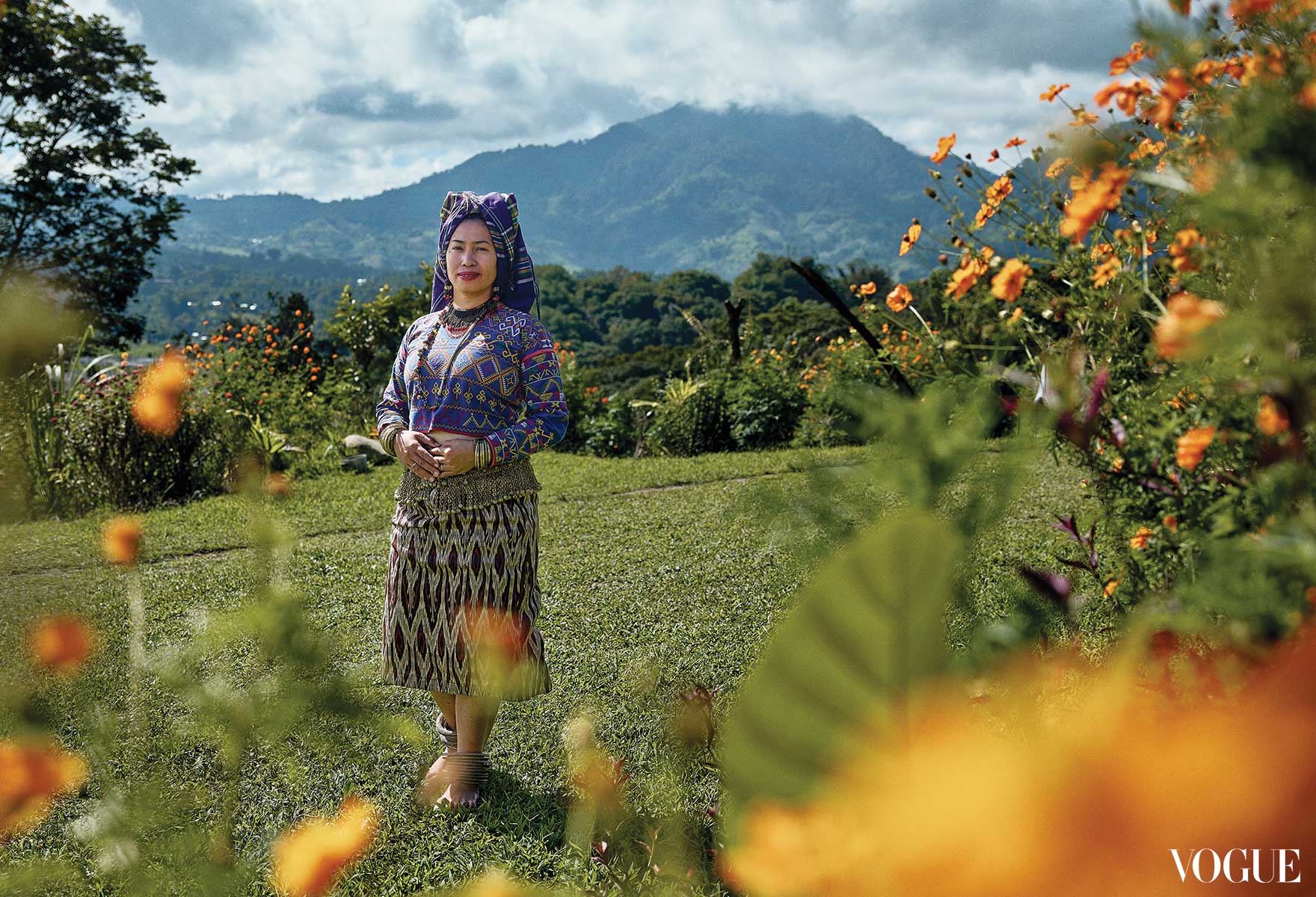
The fibers are then reassembled on the loom, ready to be woven. The weaver passes a shuttle across the warp, then beats it down with a rod. The rhythm of the weave is left, thump thump thump, right, thump thump thump. According to the Tboli online dictionary, one of the meanings of the root word “talak” is to pass through the middle, or to cross through a field from one end to another. After warp and weft have been completely entwined, the men return for the final step, which is to pound the tnalak flat and burnish it to a sheen.
After the film Gónô Tmutul: Building a House of Stories was screened in Lake Sebu, another wave of repatriated objects followed. Dr. Juan shares that Tboli elders who still live around Lake Sebu or who have gone abroad have gifted spears, swords and other objects to Manuel for safekeeping and for the House of Stories. Manuel and elders like Myrna Pula believe that the “tulus kimu” or the spirit of Tboli cultural materials will keep calling on other kimu, wherever they may be, to accompany them and to find their way back home.
